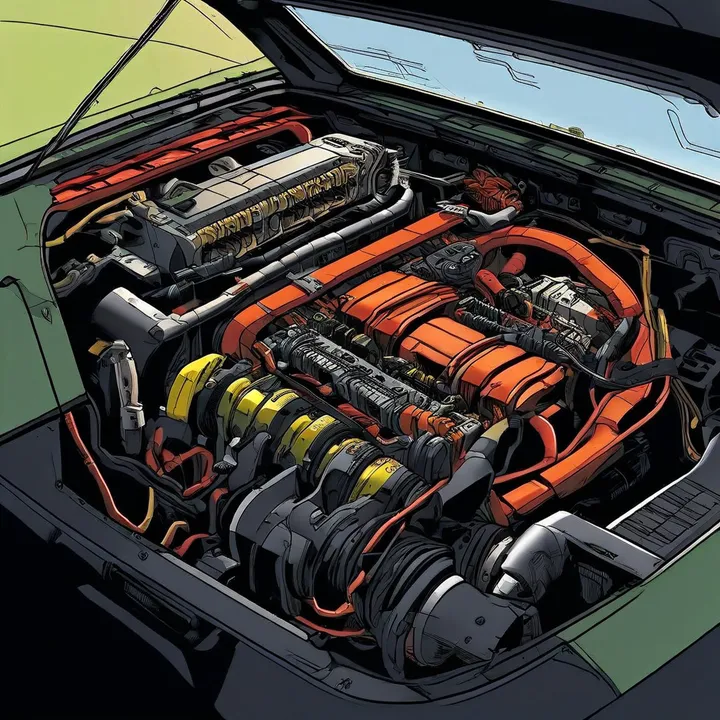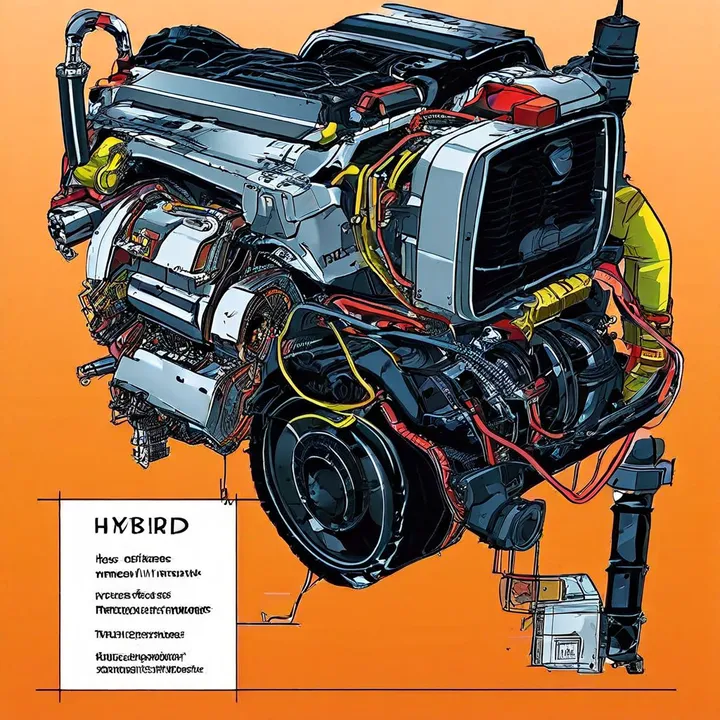


Hybrid vehicles combine an internal combustion engine with an electric motor and battery pack to improve fuel efficiency and reduce emissions. As these systems become more prevalent, issues can arise that trigger a "Hybrid System Malfunction" warning. This warning indicates a problem with the hybrid system components, which can range from minor issues to more significant faults.

Before we dive into the malfunction itself, let's take a moment to understand the hybrid system's basic components. At the heart of every hybrid vehicle lies the high-voltage battery pack, which works in tandem with the gasoline engine and electric motor(s) to provide efficient and eco-friendly propulsion. This intricate system is controlled by various electronic modules and sensors, all communicating through a complex network of wiring harnesses.
Over the years, I've encountered several recurring culprits that can trigger this warning light. Here are some of the most common causes:
| Cause | Description |
|---|---|
| Low 12V Battery Voltage | The 12V battery powers the control modules and sensors that manage the entire hybrid system. A failing 12V battery can cause communication breakdowns, leading to malfunctions. |
| Hybrid Battery Pack Issues | Problems with the high-voltage hybrid battery pack, such as degraded cells, internal faults, or loose connections, can lead to system malfunctions. |
| Wiring or Connector Issues | Damaged or corroded wiring harnesses, loose connectors, or faulty sensors can disrupt communication between the hybrid system components, resulting in malfunctions. |
| Software or Control Module Glitches | Occasionally, software glitches or control module faults can cause the hybrid system to malfunction and display the warning. |
When a customer brings in a vehicle with the "Hybrid System Malfunction" warning, my diagnostic process typically involves the following steps:
Check for Diagnostic Trouble Codes (DTCs) using an OBD-II scanner or at the dealer.
Inspect the 12V battery's voltage and condition.
Perform a comprehensive diagnostic test on the hybrid battery pack.
Visually inspect the wiring harnesses and connectors for any signs of damage, corrosion, or loose connections.
Check for available software updates from the manufacturer.
Once the cause of the "Hybrid System Malfunction" warning has been identified, the repair process can begin. Here are some common repair scenarios:
12V Battery Replacement: If the issue is a faulty 12V battery, replacing it is a relatively straightforward and inexpensive fix.
Hybrid Battery Pack Repair or Replacement: If the hybrid battery pack itself is the culprit, the repair or replacement process can be more complex and costly.
Wiring or Connector Repairs: Damaged wiring harnesses, connectors, or sensors may need to be repaired or replaced as necessary.
Software Updates: If a software update is available, it should be installed to address any known issues.
Control Module Replacement: In some cases, a faulty control module may need to be replaced.

To prevent future occurrences of the "Hybrid System Malfunction" warning, follow these guidelines:
Regular Maintenance
Adhere to the manufacturer's recommended maintenance schedule
Include battery checks and hybrid system inspections
Proper Usage
Avoid excessive idling, short trips, or aggressive driving habits
Timely Repairs
Address any warning lights or issues promptly
The cost of repairing a "Hybrid System Malfunction" can vary significantly depending on the underlying cause and the extent of the repairs required. Here's a general overview:
| Repair Type | Typical Cost Range |
|---|---|
| Minor Issues (12V battery replacement, software update) | A few hundred dollars or less |
| Major Repairs (hybrid battery pack, control module) | Several thousand dollars |
It's essential to have your vehicle diagnosed by a qualified technician to obtain an accurate cost estimate for the necessary repairs.
The "Hybrid System Malfunction" warning can be a daunting experience for hybrid owners, but with the right knowledge and professional assistance, it doesn't have to be a nightmare. By understanding the common causes, following proper diagnosis and repair procedures, and adhering to preventive maintenance practices, you can keep your hybrid vehicle running smoothly for years to come.
Remember, as a mechanic, my goal is to provide you with the best possible service and ensure your hybrid vehicle remains a reliable and eco-friendly companion on the road. So, if you ever encounter that dreaded warning light, don't hesitate to bring your vehicle in for a thorough inspection. Together, we'll get to the bottom of the issue and keep your hybrid running like a well-oiled (and eco-friendly) machine.
Common DTCs include P0A80 (Hybrid Battery Overheated), P0AA6 (Hybrid Battery Voltage System Isolation Fault), and P0604 (Control Module Random Access Memory (RAM) Error). Consult a professional mechanic for accurate interpretation and diagnosis.
Yes, extreme hot or cold temperatures, as well as aggressive driving habits, can potentially stress the hybrid system components and increase the likelihood of malfunctions.
Yes, there are various third-party diagnostic tools and mobile applications available that can provide additional insights and assist in troubleshooting hybrid system malfunctions. However, it's recommended to consult a professional mechanic for accurate diagnosis and repair.
The lifespan of a hybrid battery pack can vary depending on factors such as driving habits, climate, and maintenance. Most manufacturers recommend replacing the battery pack after 8-10 years or around 100,000 miles, whichever comes first.
In some cases, a software update from the manufacturer can address known issues and resolve the "Hybrid System Malfunction" warning. However, it's essential to have a professional mechanic diagnose the root cause before attempting a software update.
Ignoring the warning can lead to further damage to the hybrid system components, potentially resulting in more expensive repairs or even complete system failure. It's crucial to address the issue promptly to prevent further complications.
Yes, a faulty or low-voltage 12V battery can disrupt the communication between the hybrid system components, leading to the "Hybrid System Malfunction" warning. Replacing the 12V battery is often a simple and inexpensive fix.
To extend the lifespan of your hybrid battery pack, follow the manufacturer's recommended maintenance schedule, avoid excessive idling or short trips, and address any warning lights or issues promptly. Additionally, consider having the battery pack serviced or reconditioned by a professional mechanic.
Yes, damaged or corroded wiring harnesses, loose connectors, or faulty sensors can disrupt the communication between the hybrid system components, resulting in the "Hybrid System Malfunction" warning. Visual inspection and repair or replacement of affected components may be necessary.
If the warning persists after attempting repairs, it's recommended to have a professional mechanic perform a thorough diagnosis and inspection. There may be additional underlying issues that need to be addressed, such as control module faults or software glitches.

Sarah isn't your average gearhead. With a double major in Mechanical Engineering and Automotive Technology, she dived straight into the world of car repair. After 15 years of turning wrenches at dealerships and independent shops, Sarah joined MICDOT to share her expertise and passion for making cars run like new. Her in-depth knowledge and knack for explaining complex issues in simple terms make her a valuable asset to our team.











